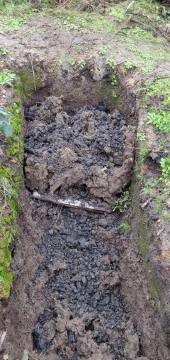






 1
1




 1
1




 1
1




William Bronson wrote:One more thing. I have found worm towers to be more like mold towers when I have used them. To avoid this in I will spike my towers with compost worms,just in case.
seeking mutualism, discovering trees

 1
1








Zach Muller wrote:My advice is to build it and observe how it does. You have obviously done a lot of design work and some consideration so just see how it goes. By observing the result you will gain the most from this idea. Raised beds work in some climates, hugels work differently in different climates, etc. getting out and gaining experience is #1 in my book, because you might succeed using a method i would fail at using.
just give it a go! I like the idea.
One thing to look out for is pallet wood thats been treated with anti fungal or some chemicals. In my experience with pallets this level of care is rare(usually about as cheap as they can make them, no need for treatments just throw it away mentality), but ive heard it can happen.
Goodluck




William Bronson wrote: Beautiful design! I like the idea of the hollow log worm tower.
Failing that,pallet wood could be screwed into a rectangular tube.
I would avoid any design that required much dismantling of the pallets.
You should only use the ones marked "HT" (heat treated) ,and realize they simply won't last very long.
The most I would do is cut them parallel to the slats,to make them the right heigh, then slide the open ends over posts driven into the ground and tie the corners with bailing wire.
I almost always bury wood below grade in my raised beds,and a worm tower will deliver nitrogen and moisture directly to the buried wood.
:
One more thing. I have found worm towers to be more like mold towers when I have used them. To avoid this in I will spike my towers with compost worms,just in case.




Steven Kovacs wrote:That's a fascinating idea.
If you build it, and you are able to build several, you could try some variants to figure out the effects of each component - say, one with a log but no tube, one with a tube but no log, one with both, and one with neither.
The rock may or may not enough to deter larger animals like racoons.




Forus Tserof wrote:
William Bronson wrote:One more thing. I have found worm towers to be more like mold towers when I have used them. To avoid this in I will spike my towers with compost worms,just in case.
On that note, how does the worm tower contents become cycled out and into the garden?
In a worm bin, the bottom bin of finished product gets dumped out into a garden or wherever. With the tower, holes in the side of it allow worms to come in and out, but how does the compost inside it go in and out (to prevent overflow)?
 1
1








William Bronson wrote: Definitely a pain in the ass to dismantle them without ruining them.
I have built my worm tunnels out of bottomless 5 gallon buckets and PVC pipe.
I like what this guy did here:
http://www.instructables.com/id/Worm-Cafe-Compost-with-earthworms-right-in-your/
There are many different kinds of compost worms.
Red wigglers probably won't survive the winter, which might be a good thing.
Alabama Jumpers might survive the winter and are noted for digging deep into the soil as well as consuming compost. There are some areas of the country that are concerned with the effects of worms on the native ecosystem. You will have to look into it for yourself,but you might start here:
http://www.wormfarmfacts.com/Alabama-Jumper.html
My suggested form for the pallet raised beds looks something like this:
https://www.flickr.com/photos/raches/6740103639/in/photostream
Notice how the front pallet has been cut down to size. I prefer very tall raised beds,but as toucan see they are easily altered.
A square bed will easily hold itself up.
If the bin is rectangular,it will benefit from having a few posts driven vertically through each pallet.
Here is an example:
http://4.bp.blogspot.com/-4eSwRtOPBSU/UFYS-nie2fI/AAAAAAAAG74/F2iLi-fT88I/s320/533164_10151109633282436_1915926012_n.jpg
 1
1





|
Please all, and you will please none --Aesop ... displeased tiny ad:
The new permaculture playing cards kickstarter is now live!
https://www.kickstarter.com/projects/paulwheaton/garden-cards
|





